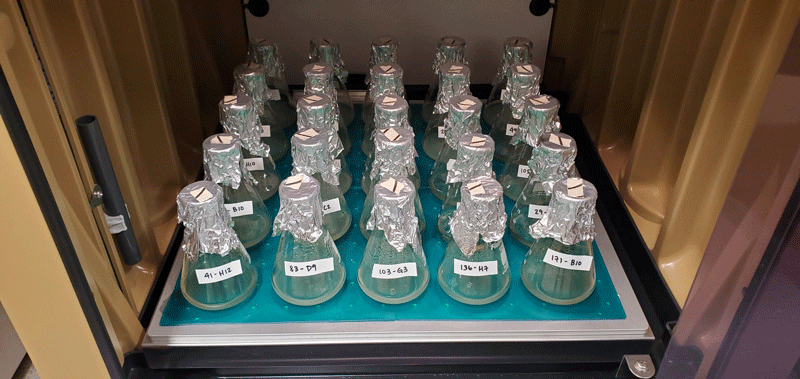Engineering bacteria to extract rare earths
Scientists from Cornell University, USA, are engineering bacteria to extract rare earth elements (REE) – a process that they believe could replace the thermochemical methods currently in use.

The researchers have screened bacteria Gluconobacter oxydans, and identified a comprehensive set of genes that underly its bioleaching capabilities.
They explain that the bacteria is known for making an acid called biolixiviant that dissolves rock – it uses the acid to pull phosphates from REEs.
Postdoctoral Researcher, Alexa Schmitz, says, ‘Gluconobacter is an acetic acid bacteria capable of producing strong organic acids from sugars. In particular, it can rapidly convert glucose into gluconic acid and other similar compounds that we can then use for the extraction process. These organic acids break down quickly in the environment and are less harmful to biological life.’
The aim of this work has been to manipulate the bacteria’s genes so it extracts the elements more efficiently. To do so, they have used a method called ‘Knockout Sudoku’, that allows them to disable the 2,733 genes in the bacteria’s genome one-by-one.
‘Although we have excellent tools to read and write genomes, only a small percentage of gene functions are known. One of the best ways to elucidate a gene’s function is to disable the gene and test for a change in function,’ Schmitz says. ‘We found several genes whose deletion resulted in an increase in bioleaching capability (up to 18%).’
He shares, ‘In our case, we’ve created a collection of strains, each with a different gene disabled. We then screened these knockout strains and found over 300 with differential abilities to use glucose to lower the media pH – a good predictor of bio-mining efficiency. Among this set, we selected the strongest and weakest acidifiers to confirm a direct effect on bio-mining.’
Schmitz has identified genes that put the brakes on acidification and another that accelerates it.
The researchers are working to regulate the gene that accelerates acid production, hoping to create a system whereby the bacteria can run on affordable cellulose-derived sugars for energy.
The team has used mass spectrometry techniques to measure concentrations of REEs in solutions where mutants were exposed to ore and found that for some of these mutants the concentration is high.
‘We tested REE extraction by mixing the biolixiviant produced by the bacteria with retorted phosphor powder...We incubated them with shaking for three days, removed any remaining solids, and then measured the concentration of all REE in the leachate using inductively coupled plasma mass spectrometry (ICP-MS),’ Schmitz adds.
‘We were very excited to find that the knockout strains with improved acidification also demonstrated improved bio-mining efficiency, as much as 18%.
‘In particular, a few of the better bio-mining strains were disrupted in genes involved in the phosphate-specific transport (Pst) system. One of the primary reasons microorganisms generate organic acids is for the solubilisation of phosphate and other minerals in their environment.
‘The Pst system is critical for sensing phosphate. We believe that the lack of these genes means the bacteria cannot sense that they have enough phosphate, and as a result they produce more organic acids.’







